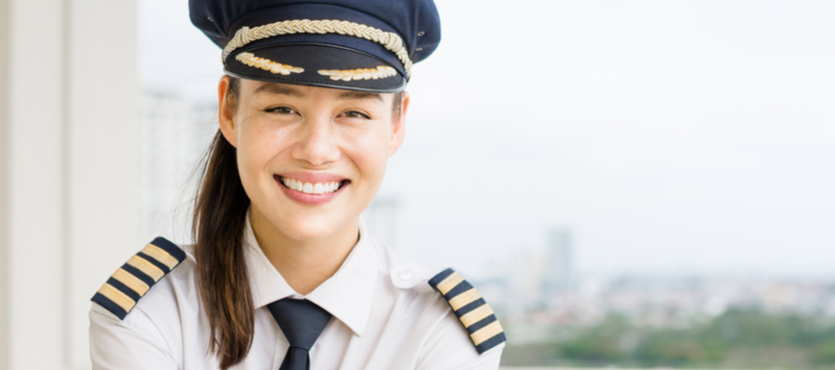If you are planning to become a pilot, recreational or commercial, you are likely wondering about how long the process will take. The truth is earning your pilot’s license depends on several from what type of pilot’s license you are getting to how much flexibility you have in your existing schedule. In fact, earning a pilot’s license, in most cases, won’t take nearly as long as you might imagine. The more access you have to earning flight hours and gaining certified instruction and your aptitude at passing exams and meeting requirements can speed up the process for you to become a pilot. Here, the professionals at AirLink Flight School explore the pilot’s licensing available as well as average times to earn them.
The Timing for Earning Your Pilot’s License
Your commitment and availability play a big role in how quickly you can earn your pilot’s license, as does choosing a well-qualified flight school. AirLink Flight School, with locations in Florida and Maine, promise year round flight training in a variety of conditions to ensure you gain the needed experience and flight time. On average, becoming a pilot takes between three and four years, the equivalent of earning a bachelor’s degree.
Pilot Licenses and Timing
- Student Pilot Certificate – Student pilots begin their education with a certified instructor. After the needed instruction, the next step is passing the FAA Student Pilot tests. In addition, to qualify as a student pilot, you must be at least 16 years old, be fluent in English, possess a valid driver’s license, have a third-class medical certificate issued by the FAA, and approval by an FAA inspector or designated pilot examiner. Instructor approval comes when you master takeoffs, landings, aircraft control, and good judgment regarding safety. With a student pilot certificate, you can fly solo but you cannot carry passengers on your flights.
- Sport Pilot Certificate – The first steps to earning your sport pilot certificate requires you to have a student pilot certificate and 20 hours of flight time. A sport pilot certification allows you to fly a limited number of aircraft including LSA (light sport aircraft) with no more than two seats. Those with sport pilot certificates cannot fly after dark, above 10,000 feet, or in controlled airspace. Like student pilots, sport pilots are not authorized to fly with passengers.
- Recreational Pilot Certificate – To qualify for recreation pilot certificate, you must be at least 17 years old and have a student certificate or a sport certificate. In addition, you will need to log 30 hours of flight time, including 15 training hours. Recreational pilots are prohibited from flying more than 50 nautical miles from their training airport, in airspace with air traffic control requirements, or at night. Recreational pilots can fly with a single passenger on board.
- Private Pilot Certificate – Private pilot certification requires the completion of student pilot certification, a valid driver’s license, as well as passing FAA knowledge/practical tests, and a third-class FAA medical certificate. To earn your private pilot certification you will need 35 hours of varied flight experience, including night training. Private pilots can fly with passengers, but cannot be paid for flights.
- Commercial Pilot Certificate – Compared to the certifications already discusses, commercial pilot certification requires a considerably higher level of training and knowledge. Earning a commercial pilot certificate begins with earning a private pilot certificate. In addition, you must be at least 18 years of age, have a second-class FAA medical certificate, and be fluent in English. Finally, you must log hours in both single and multi-engine and pass training and class rating requirements, log up to 250 hours of piloting time, pass a written aeronautics test as well as FAA flight and oral tests with an FAA Inspector, designated examiner, or check instructor. With this certification, you can be paid for flying but you cannot fly passengers for hire.
- Airline Transport Pilot (ATP) Certificate – If you dream of flying for a commercial airline, this is your certificate. To earn this certification, you will need a commercial pilot certificate, as well as 1,500 or more hours of flight time including 500 cross-country hours and 100 night hours, an instrument rating, and be at least 23 years old.
Are you ready to become a pilot? AirLink Flight School is awaiting your call.

